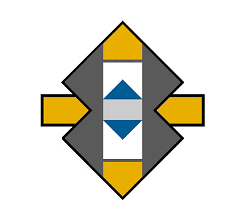 Blockchain is a popular buzzword being thrown around nowadays, though its actual definition remains ambiguous to the masses. So what is it? Well, here’s an intuitive scenario to which more information and explanation will be compounded: Imagine that I give you a dollar bill. You know I gave it to you, I know I gave it to you. You now have one dollar bill, and I have zero dollar bills. A third party wasn’t needed to witness this transaction because, well, we both know it happened. The dollar bill is yours now, and I cannot give you anymore dollar bills because I have none left. Now imagine I sent you a digital dollar. I can certainly send you this dollar bill, but with new problems arising: first and foremost, how do you know that the dollar bill I sent you is yours and only yours? See, in person, by me handing over my only dollar bill, you know that there is no possibility of me, say, walking down the street to Paul and handing him the same dollar bill. This sense of security for digital transactions does not exist. I could give you a dollar, but I could also give ten other people the same dollar, just by doing some fancy computer stuff and duplicating it. This induces a problem known as double spending, in which, thankfully, there is a solution.
Blockchain is a popular buzzword being thrown around nowadays, though its actual definition remains ambiguous to the masses. So what is it? Well, here’s an intuitive scenario to which more information and explanation will be compounded: Imagine that I give you a dollar bill. You know I gave it to you, I know I gave it to you. You now have one dollar bill, and I have zero dollar bills. A third party wasn’t needed to witness this transaction because, well, we both know it happened. The dollar bill is yours now, and I cannot give you anymore dollar bills because I have none left. Now imagine I sent you a digital dollar. I can certainly send you this dollar bill, but with new problems arising: first and foremost, how do you know that the dollar bill I sent you is yours and only yours? See, in person, by me handing over my only dollar bill, you know that there is no possibility of me, say, walking down the street to Paul and handing him the same dollar bill. This sense of security for digital transactions does not exist. I could give you a dollar, but I could also give ten other people the same dollar, just by doing some fancy computer stuff and duplicating it. This induces a problem known as double spending, in which, thankfully, there is a solution.
How can I give you a dollar, and how can you have the peace of mind that you are the only recipient of this dollar? Well, this is where a ledger comes in to play. But surely no single person could be in charge of this ledger, right? Corruption would easily become a possibility in this scenario, with humanity being forced to trust this one individual to maintain an accurate log of all the transactions to ever exist. Because no such perfectly benevolent human being exists—and definitely not one that is incapable of say, accidentally giving someone an extra dollar instead of the one, this system does not exist. Rather, the reality is that everyone has access to the same ledger so that you, yourself, could see, since the start of time, how many single dollar transactions have been made (and any transaction, for the matter). And well, you can’t really beat it. I can’t just send you a dollar I don’t have because everyone would know! With this system in place, every transaction is essentially like a physical one: I give you something, you accept this said thing, and there is digital confirmation that this transaction transpired.
Blockchain is that: an impenetrable, unhackable, digital ledger in which economic transactions are recorded. The currency associated with this system is Bitcoin. Blockchain is a revolutionary technological advancement, orchestrating the manifestation of the Digital Age today by increasing connectivity and making for faster transactions. It has already permeated through a plethora of industries too! However, let’s delve more into the overarching branch of blockchain before talking specifically about applications.
So…where, how, what?
The entire blockchain system doesn’t seem even the slightest bit trivial. It’s not like someone, y’know, decided to sit in their basement one day and come up with this complex business model, in which it made enough sense for millions of people to follow…right? Unless you were a group of people perhaps, underneath the same alias. The former seems more plausible, but who knows, really? We might not ever know.
Nonetheless, the day was January 10th, 2009. A “man” underneath the pseudonym of Satoshi Nakamoto authored a paper on bitcoin, and deployed bitcoin’s original reference implementation. A few months prior to that, a mysterious domain hit the web; it was titled ‘bitcoin.org’.
One of Nakamoto’s early supporters came in the form of a console game developer named Hal Finney. When the software was eventually released, Finney offered to mine the first coins—10 original bitcoins from block 70. Upon his interaction with Nakamoto, Finney said, “I thought I was dealing with a young man of Japanese ancestry who was very smart and sincere. I’ve had the good fortune to know many brilliant people over the course of my life, so I recognize the signs.” Unfortunately, Finney passed away due to ALS in 2014, though he did leave his cache of bitcoins in an offline wallet for his family. He had no idea whether or not it would be of any financial use to those that would inherit it, but, as of today, one bitcoin is worth $6,413.
In 2011, Satoshi Nakamoto disappeared from the digital goldmine he, she, them, had created, with an official statement on April 23rd that left an entire community in shock: “I’ve moved on to other things. It’s in good hands with Gavin (one of the early adopters of the currency) and everyone.” From then on, radio silence.
Blockchain Today
So how are things looking nowadays? Did blockchain technology take a nose drive and crash into flames? Just by the value of a single bitcoin today, we can infer that no such thing has happened, and probably won’t for the foreseeable future. Matter of fact, the visibility and credibility of blockchain technology is only projected to increase in the next couple of years, already permeating into a vast array of markets.
- Blockchain in real estate. A multiple listing service (MLS) is a database only accessible by real estate agents, unless enrolled in a flat fee MLS program, and used for the buying and selling of homes. However, with the use of blockchain technology, this archaic system can be eradicated entirely, instead encouraging a centralized, national database by giving users access to property information in real time.
- Blockchain in retail. Whether you’ve participated in the purchase of knock-off designer goods (I’m sure we all have, knowingly or unknowingly, in our lives), or buy straight from the source to avoid this, blockchain is revolutionizing retail transactions. Blockchain can make it possible so that each customer is able to track the direct source of the items they purchase, to ensure that it comes from a reputable source. Blockchain will also help curb the theft of expensive items and resale of stolen goods through tracking the ownership of items.
- Blockchain in voting. It is easy to associate blockchain solely with monetary transactions, but what makes blockchain useful at its core is its ability to keep an impenetrable, unmodifiable, ledger of information. Voter fraud and the rigging of results has been a long lasting grievance with the voting process for decades. But what if we could erase this problem by using blockchain technology for voter registration and verification, and counting only legitimate votes, with no votes being edited or removed?
While three industries are listed here, blockchain is only at the precipice of making its mark in the new Digital Age.







